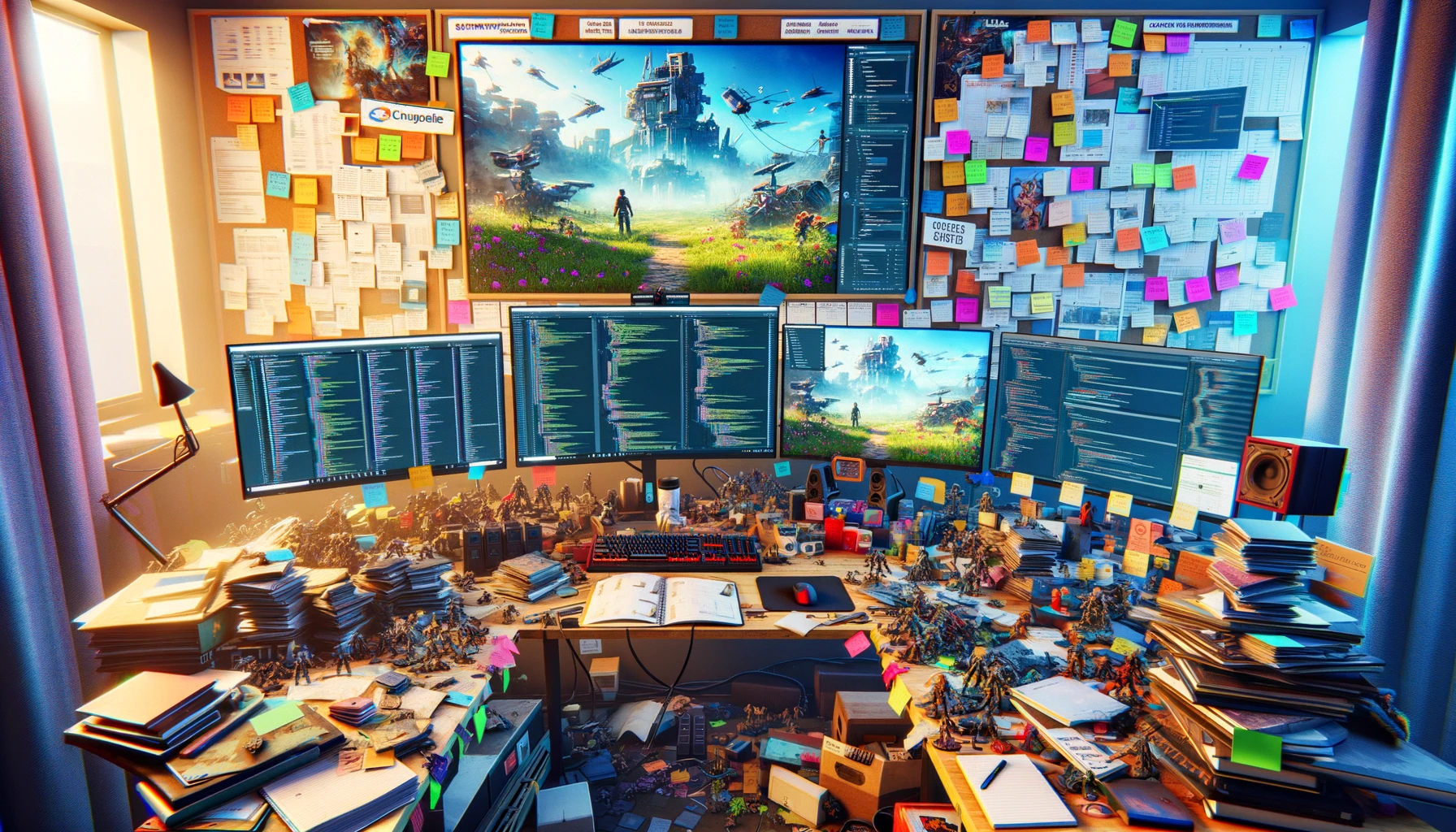For “Chronosynclastic Infundibulum”, crafting a soundtrack and sound effects that enhance the game’s atmosphere and gameplay is essential, especially given its thematic depth and the unique time manipulation mechanics. Here’s how you can approach both music and sound design:
Music
1. Thematic Score
- Mood and Style: Compose a score that blends electronic and orchestral elements, reflecting the futuristic setting intertwined with the mystical and historic aspects of time manipulation. Think of a blend similar to the soundtracks of “Blade Runner” and “Inception”.
- Dynamic Layers: Implement a dynamic music system where layers of the music can be added or subtracted based on the player’s actions or the intensity of the gameplay. For instance, as players manipulate time, subtle layers could weave in to highlight the shift.
2. Motif-Based Themes
- Character Themes: Each main character could have a musical motif that plays when they are the focus, helping to build their identity and emotional depth.
- Temporal Themes: Different time periods and zones within Chronopolis can have distinct musical themes, influenced by the era most represented in that zone, such as baroque elements in historic districts or synth-heavy compositions in modern areas.
3. Ambient Music
- Environmental Interaction: Ambient tracks that change subtly depending on the area of the city or the type of temporal zone (Stable, Flux, Dead) the player is in, enhancing the feeling of a living, dynamic environment.
Sound Effects
1. Time Manipulation Sounds
- Unique Cues: Design distinctive sounds for each type of time manipulation — rewinding, pausing, and fast-forwarding. These could include mechanical clicks, the winding of clock gears, digital glitches, or ethereal whooshes to make the player’s actions feel impactful.
- Environmental Reactions: Sounds that change based on time states, like muted echoes in paused states, distorted sounds in rewound states, or heightened, sharp noises in fast-forwarded scenes.
2. Ambient and Diegetic Sounds
- City Sounds: Create a rich tapestry of background noise for different parts of the city. For example, bustling traffic sounds in The Core, lively market noises in The Fringe, and industrial hums in the Industrial Sector.
- Interactive Sounds: Objects and NPCs respond with realistic sound effects that fit their materials and actions, enhancing immersion and realism. For instance, different footsteps sounds on cobblestone versus metal surfaces.
3. Narrative and Emotional Cues
- Reaction Sounds: Short musical cues or sound effects that play in response to player decisions or significant narrative moments, helping to underscore the emotional impact of these events.
4. Interface Sounds
- Menu and UI: Sounds for interacting with the game’s interface should be futuristic and sleek, reinforcing the game’s aesthetic and making the user experience more intuitive.
Implementing these musical and sound design strategies will not only deepen the immersive experience but also dynamically enhance gameplay, making “Chronosynclastic Infundibulum” a richer and more engaging game. Would you like to delve into specific sound designs or compositions for certain game scenarios or characters?
